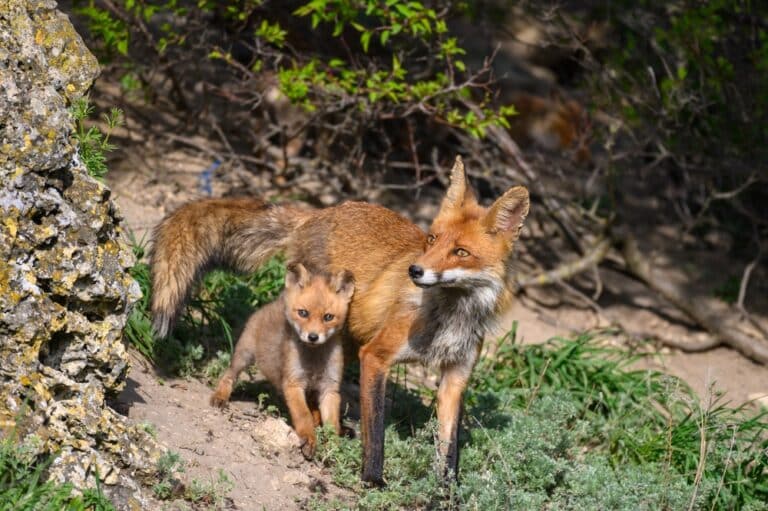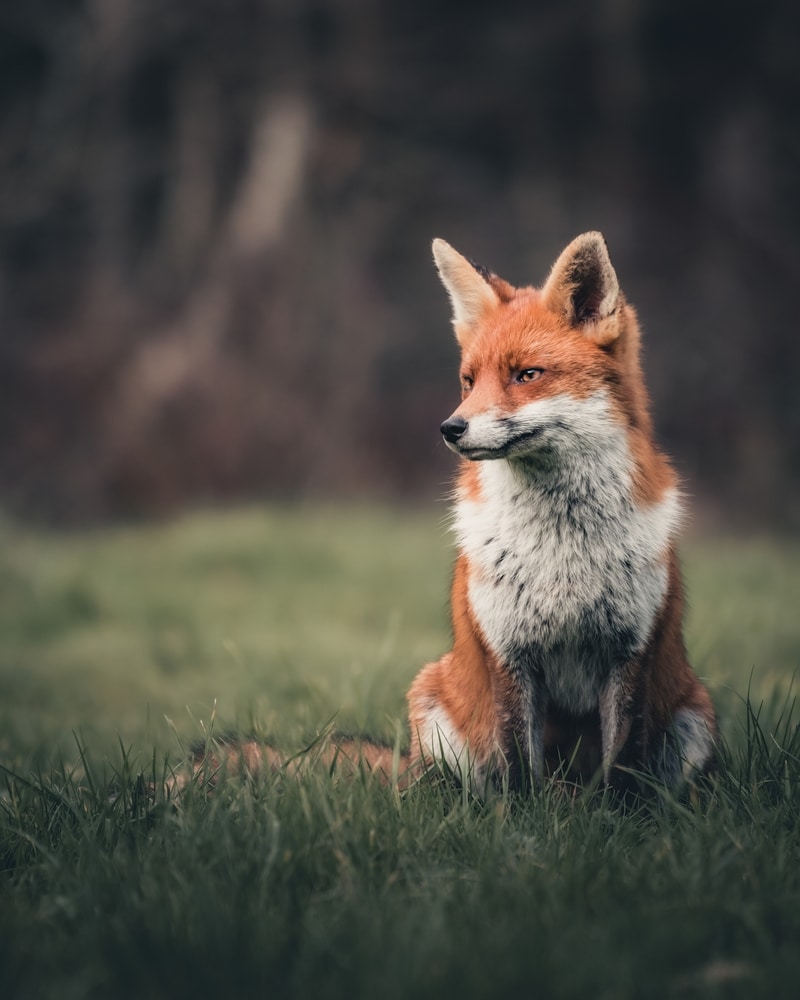Facts about the Red Fox
Scientific name: Vulpes vulpes
At a glance
- The Red Fox has the largest natural distribution of any land mammal except human beings.
- The UK population is around 375,000, perhaps one-third are resident in our towns and cities.
- Thousands are snared every year to protect pheasants and grouse for shooting.

One of the most recognisable of all our mammals, the Red Fox (or Common Fox) is our only (remaining) wild member of the dog family.
They are found throughout Europe, temperate Asia, northern Africa, and North America: the largest natural distribution of any land mammal except human beings.
Resourceful animals, foxes occupy diverse habitats including forests, grasslands, mountains, deserts, and now human environments like farms, suburban areas, and even large cities. They are typically solitary hunters (unlike Wolves) feeding largely on rodents, rabbits, carrion, and birds, but they will eat fruit and vegetables, fish, frogs, worms – on salt marshes they will even eat crabs and dead seabirds. As many of us will have experienced, foxes will take pet food, and opportunistically tip over garbage cans or rip open bin bags.
Being able to live almost everywhere and eat everything hasn’t – as most people will know – endeared foxes to everyone. They have been hunted for their fur and persecuted for as long as humans have kept livestock, and the levels of persecution reached new highs with the development of shooting estates in the 18th century

Hunting
Largely thanks to the disproportionate grip that farming and shooting has on how wildlife legislation is enacted across Britain, Foxes have only limited legal protection. They can be shot, snared (tens of thousands are snared to protect pheasants and grouse), and trapped all year round with welfare conditions attached that don’t amount to very much at all as foxes are killed well away from public scrutiny.
Thanks to the Hunting Act 2004, though, they may not hunted with hounds.
As our site was first set up to prove, even though fox hunting is banned in England, Scotland and Wales, hunts are using so-called ‘trail hunting’ as a smokescreen to continue much as they have done for two hundred years. ‘Trail hunting’ was invented soon after the Hunting Act was passed and is used to both confuse onlookers and the court system and to allow hunts to maintain the structure and paraphernalia of hunting while they work for repeal. Almost twenty years after the Hunting Act came into force there are still almost 200 foxhound packs registered in the UK, collectively carrying out over 15,000 hunts each year.

Cubbing
Every year up to 10,000 fox cubs are also killed by hunts ‘training’ hounds to kill foxes. ‘Cubbing’ (or autumn hunting as hunters have taken to calling it in the hope that we will be fooled by their clever way with words) is a largely static form of hunting. It takes place at dawn and dusk, with hunters on horseback surrounding wooded areas (or sometimes cereal fields), who then send in hounds to ‘train’ them on small, inexperienced cubs ahead of the main hunting season. It is of course illegal.
This brazen law-breaking and (currently) legal killing of foxes is hugely unpopular with the general public, but supported by many landowners and farmers who still view foxes as ‘vermin’ (foxes are not and have never been legally classified as ‘vermin’) and far too numerous. The truth is that contrary to what our ‘countryside managers’ would like us to believe, there is no evidence at all that fox populations have “exploded since the ban”. Indeed, there are no data to suggest that the 2004 Hunting Act has had any significant impact on fox numbers, and (just as they threatened) it’s clear that any ‘slack’ has been taken up by gamekeepers and farmers shooting more foxes.
Our fox population is probably stable or slightly declining overall, but it’s difficult to get an accurate picture. Foxes are of course largely secretive and nocturnal. Many landowners won’t report how many they are seeing and killing. And many homeowners that may have foxes in their gardens don’t report them (sometimes fearing that neighbours – or local authorities – might insist they are removed).
However, what data has been collected suggests that the national population is somewhere around 375,000, with perhaps one-third of those resident in our towns and cities.
A Proper Ban on Hunting
It has been almost two decades since the passing of the Hunting Act 2004, banning the hunting of wild mammals with dogs in England and Wales.
But hunts continue to operate, creating havoc and breaking the law by chasing and killing wild mammals under the guise of ‘trail hunting’, using loopholes and exemptions in the Hunting Act to evade prosecution.
Until all mammal hunting is made unlawful and more effective legislation is in place, hunts will continue chasing and killing wildlife for many years to come.
We need to do more than allow hunts to continue in a slightly different form – we need to get rid of them altogether.

